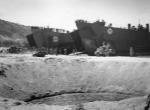NavSource Online: Amphibious Photo Archive
HM LST-405
ex
LST-405

LST-405 transferred to the Royal Navy for the duration of World War II
Please report any broken links or trouble you might come across to the Webmaster. Please take a moment to let us know so that we can correct any problems and make your visit as enjoyable and as informative as possible.

Royal Navy History Commissioned into the Royal Navy as HM LST-405, 28 December 1942 Participated in Sicily, Reggio, Salerno, Anzio, Normandy and Malaya operations (MacDermott Ships Without Names) Demobilized, at Ceylon in February 1946 Sunk, 27 March 1946 while in Royal Navy service custody
| Click On Image For Full Size Image |
Size | Image Description | Source | |
|---|---|---|---|---|
 |
85k | HM LST-62 and HM LST-405 beached, 3 September 1943 (Invasion Day) at Reggio Italy, while unloading vehicles. | Charles W. Pates for his father Arthur Vincent Pates HM LST-405 | |
| Back To The Navsource Photo Archives Main Page | Back To The Amphibious Ship Type Index | Back To The Tank Landing Ship (LST) Photo Index |
| Comments, Suggestions, E-mail Webmaster. |
|
This page is created by David W. Almond and maintained by Gary P. Priolo |